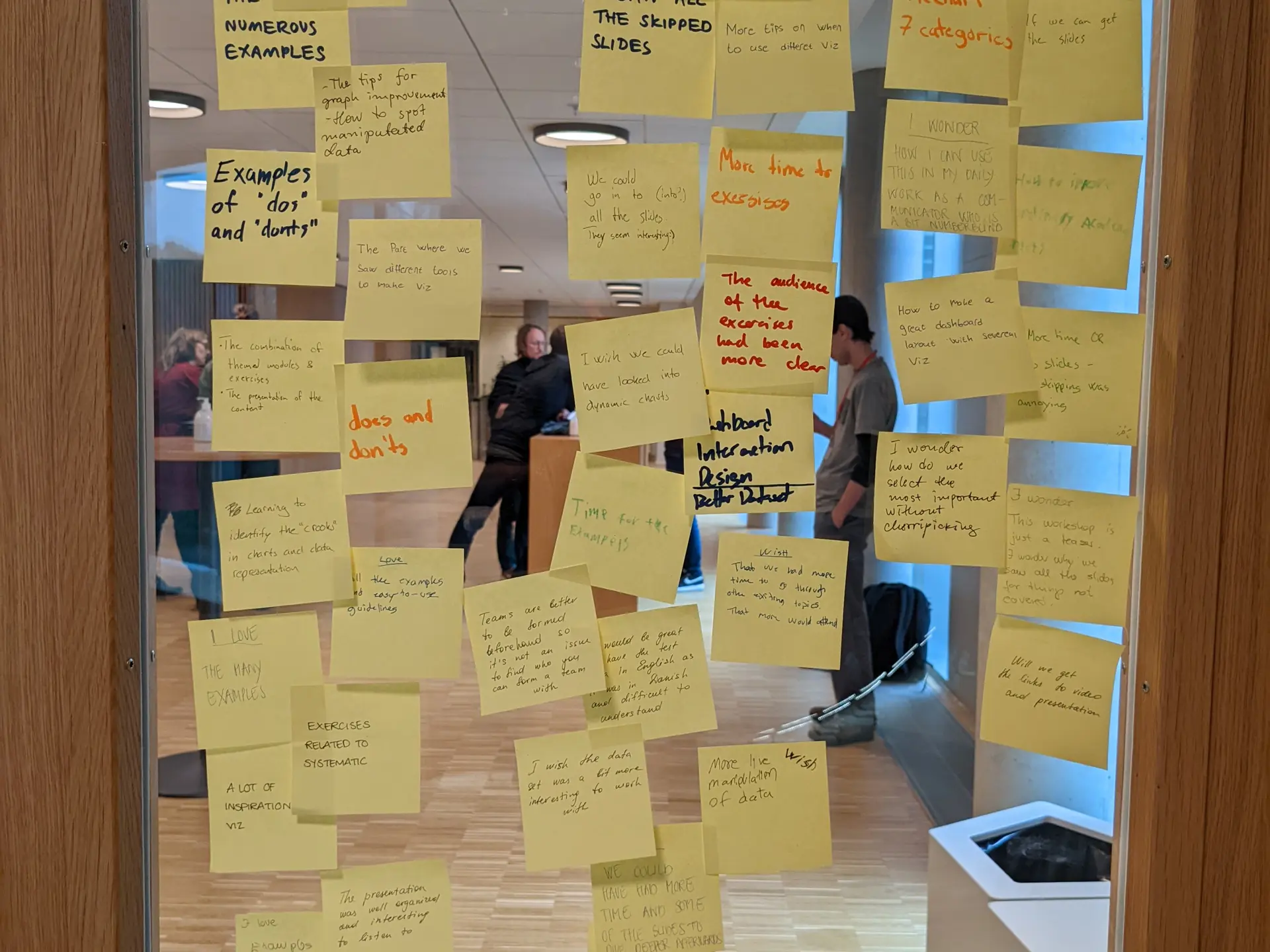When knowledge flows both ways: Focus on data visualisation
With a desire to acquire knowledge and inspiration, Systematic invited experts from the IT University of Copenhagen (ITU) to a professional workshop on data visualisation and data-driven decision making. However, it was not only Systemates that learned something new.
At Systematic, knowledge sharing and discussion are the focal point of various professional ‘knowledge networks’.
In early November, the Network for User Experience design invited two associate professors from ITU to a professional workshop on data visualisation and data-driven decision making. Christopher J. Zimmerman and Michele Coscia teach Data Science at ITU, while Zimmermann is also a Senior Analytical Consultant at Google in Denmark. The two possess extensive theoretical and practical knowledge of the issues that Systematic's employees face on a daily basis.
The workshop lasted over two days at our headquarters and included presentations and practical exercises, which were based on Systematic's own test data. It was something that pleased the more than 40 participants:
- “We were presented with ’best practices’ in data visualisation and storytelling with data. The two associate professors challenged our traditional ways of visualising data by bringing context into the workshop - that way it all became really relatable and easy to put into practice”, says Julie Sohn, Data Scientist, Systematic.
However, it was not only the employees at Systematic who got something out of the workshop. For Zimmermann and Coscia it was interesting to see how business applies theory, and to experience Systematic's approach to data visualisation.
A large part of Systematic's software solutions are based on visualised data that is used in day-to-day life, where it is often necessary to make crucial decisions in critical situations.
- ”Whether it be for doctors, soldiers, or librarians, it is important to get accurate data that is presented in a way that is easy to decode. Our focus on user-friendliness and efficient dissemination of large amounts of data is therefore a central part of the work in, for example, our business intelligence and data science department, where we support internal and external projects in the use of data to support critical decision-making and change management”, says User Experience Designer Kirstine Madsen, who participated in the workshop.
”The workshop provided some great insight into the world of data visualisation, with a good balance of lectures and practical exercises. I acquired some very concrete and comprehensible takeaways that I will be able to include directly in my daily work with business intelligence. ” - Maria Nørholm Dam, Business Intelligence Consultant, Systematic
